Fitness and Education: from IRL to URL
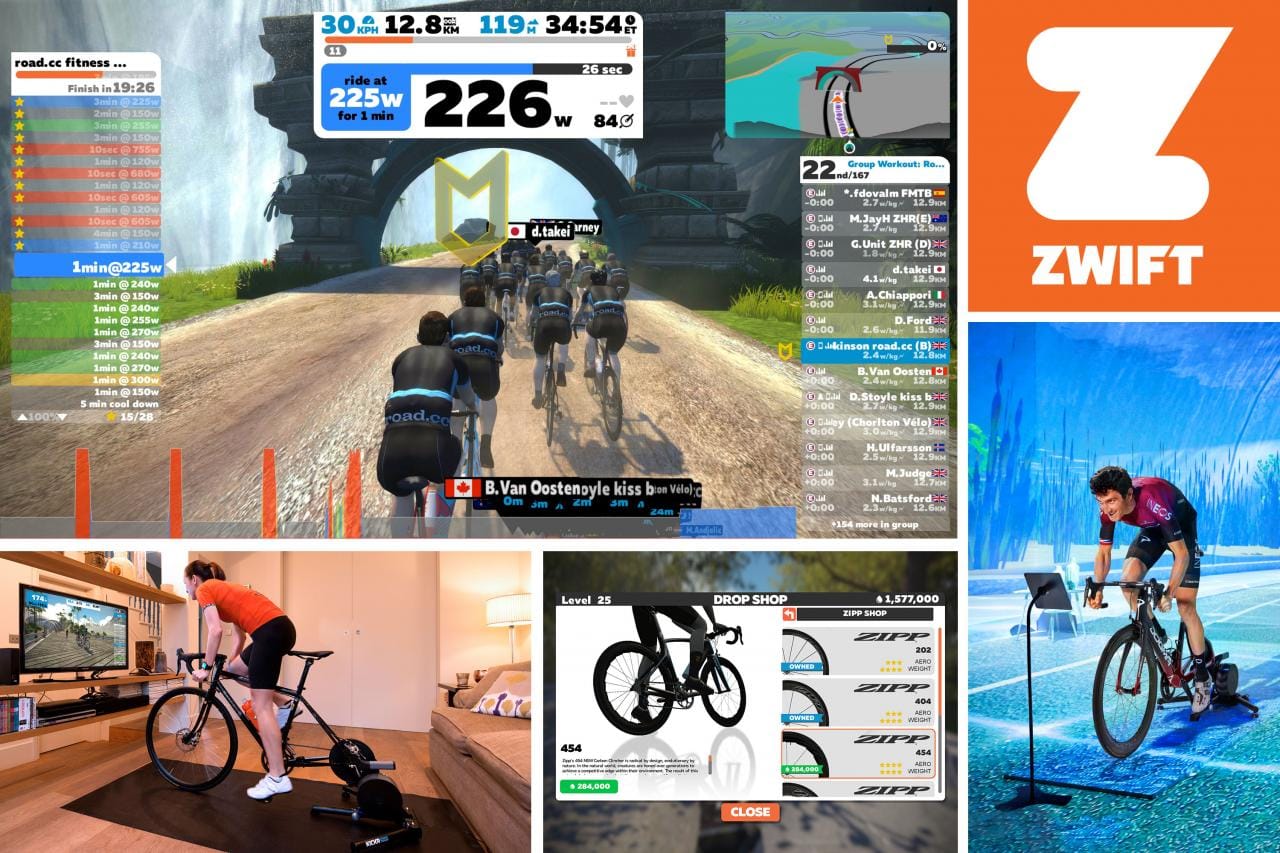
8 lessons for the new era of learning
Give your social media timelines a cursory scroll and it probably won’t be long until you’re cajoled to take on a Workout, Sprint, HIIT, or Bootcamp.
But a growing number of these promoted posts aren’t pushing your local gym or a fancy new wellness brand: they’re from educators. Sign up for a weekend data science bootcamp from General Assembly or Flatiron School. Enrol in a short-form sprint operated by Section 4, the startup founded by NYU professor Scott Galloway. Take a workout with ad industry magazine Contagious or strategy collective Sweathead (yup – even their name has a fitness connection).

This positioning makes sense on a number of levels. We all know that neither learning or working out tend to come easy. Being physically and mentally fit are both attractive, aspirational traits. And as long as they’re not causing damage, when we find these activities tough they’re more likely to be effective and rewarding.
But the relationship between the fitness and education sectors runs far deeper than cute analogies and sponsored Instagram posts. For those in both traditional and alternative forms of education there’s much to learn – and from one company in particular.
The leader of the connected fitness boom
In less than a decade, New York-based fitness company Peloton has gone from a quirky idea raising some cash on Kickstarter to a multi-billion dollar business blazing a trail on multiple fronts.
The company started life in 2012, when former Barnes & Noble e-commerce executive John Foley wanted to figure out a way to bring fitness classes into his home. His solution was a technology-driven exercise bike.
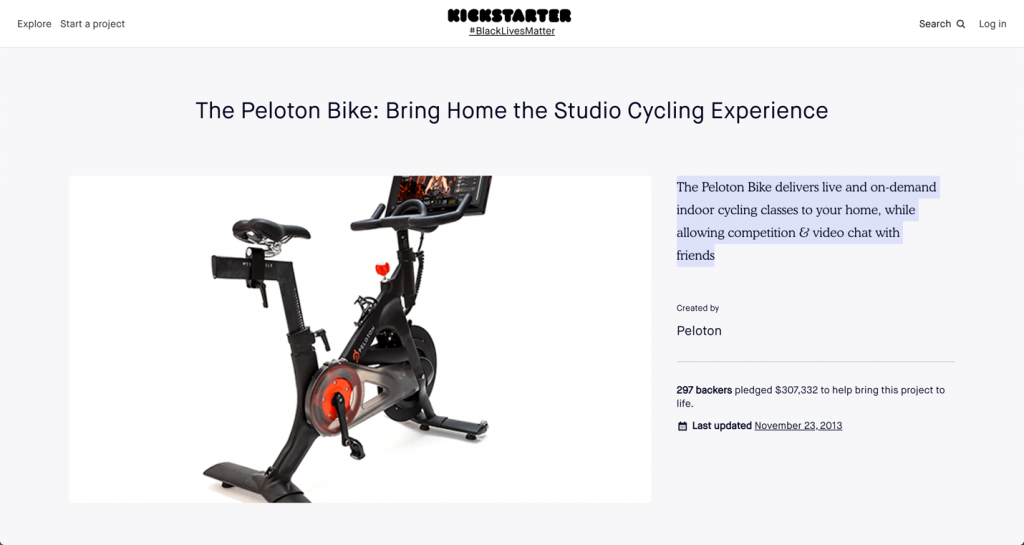
Although the company’s range of offerings have evolved since those early days, the core elements behind Foley’s first product still remains in place today:
- hardware (an internet-enabled exercise bike or treadmill)
- software (including a ton of data and gamification), and
- content (livestream and on-demand classes led by human instructors)
Beginning as an offering exclusively for the affluent, in the 12 months before COVID struck Peloton had – to a degree, at least – begun to democratise their model with initiatives like payment plans. Then, as pandemic conditions pushed a big, fat dollop of consumer spending to at-home fitness solutions, the company’s growth exploded.
The combination of hardware, software and content, along with deft execution and handy market conditions has dramatically accelerated both the company’s user base and its stock price. For the 3-month period ending Dec 31, 2020, Peloton’s revenue grew 128% to $1.06 billion – up from $466.3 million a year earlier. That’s a lot of bikes now taking pride of place in living rooms, bedrooms, and basements.
In this connected fitness boom, there’s been a clear demarcation of winners and losers. Along with Peloton, the likes of Mirror (acquired by Lululemon for a cool $500m) plus fast-scaling new entrants including Playbook, Tonal, Hydrow, and Liteboxer appear to be forging ahead. Meanwhile, recent IRL darlings like Barry’s and Soulcycle have been pushed to the sidelines.
We can break down the formula behind the success of this new wave of fitness companies into 8 key components. In no particular order:
- Classes
- Content
- Talent
- Community
- Technology
- Location
- Brand
- Vertical Integration
In this post we’re going to look at how these 8 elements driving the boom in connected fitness will also transform education.
To get warmed up, we’ll kick off with a quick tour of where the education sector is at today. But before that, a few quick notes:
- Arguably, education is something done to you, and learning is something you actively enrol into (I prefer the latter). However, for ease, I use the words ‘education’ and ‘learning’ interchangeably in this piece
- This post focuses mainly on adult education, but plenty of the ideas inside the 8 factors can be applied to K-12 and higher ed too
- For each of the 8 factors, I’ve included an ‘Opportunity for Adventure’ if you’re looking to build something in this realm. To get even more Opportunities for Adventure, you may want to join my newsletter, handily titled ‘Adventures…’
- Music listened to during the writing of this piece: Bicep, Depeche Mode, Sasha (‘Involver’ and ‘LuzOscura’), Gigi Masin
Ok! Let’s get into it…
Education getting into shape
There’s a lot of excitement about the education space right now – understandably so.
After being seen as a fringe area for big-name investors, EdTech – the world of education tech startups – is suddenly hot. VC investment in this realm has increased enormously, with over $16bn committed to startups in 2020.
To put this into context, the global fitness industry is pegged as being worth around $100bn (albeit with some niches being excluded from this figure). Meanwhile, research firm HolonIQ expects the global education market to be worth a gargantuan $7tn by 2025..
The now-$75bn EdTech market isn’t just about specific solutions for schools, though. There are many hundreds of startups focused on everything from pre-school learning and higher education, through to professional development, corporate training, and post-retirement offerings.
And adjacent to the direct education market there are a plethora of tools like Zoom, Mmhmm, Miro and Menti that – whether by accident or design – are enabling fresh types of learning experiences to emerge. Here, we’re just starting to see what Scott Belsky calls ‘the interface layer’. These are companies providing services underpinning dozens of other company’s offerings (the most obvious example of an interface layer being Google Maps’ API powered hundreds of apps using navigation). In education, Zoom is the interface layer underpinning hot new startups like Class.
On top of all this, a new wave of media influencers are becoming pied pipers for various flavors of online courses and programs: through aggregated platforms like Masterclass and Byju’s; to individual branded offerings such as ‘Business Class’ from Sophia Amoruso of Nasty Gal, and Scott Galloway’s alter ego Prof G.
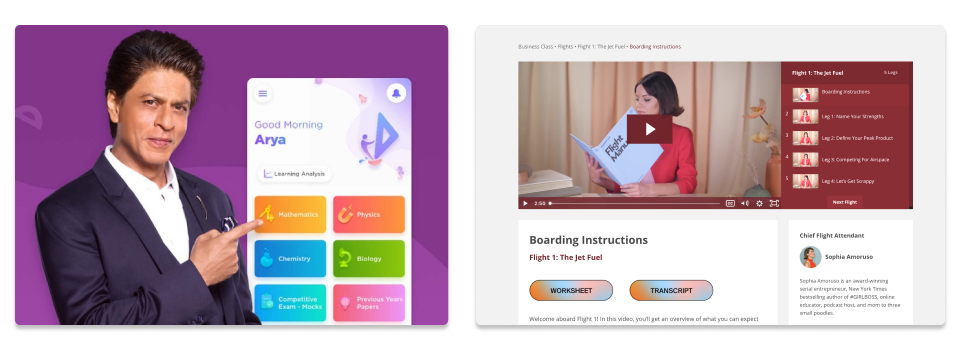
It’s got to a point where Zoom has become for video communication what Hoover – or perhaps more aptly, Dyson – has for vacuum cleaners.
Something is afoot – and it’s a world away from dusty old lecture halls and five (sometimes six…) figure admission fees.
However, there’s still an enormous amount of white space that hasn’t yet been explored.
As Packy McCormick has noted, learning in the internet age feels like it’s at the stage of banner ads: a new medium offering more optionality and utility than what came before, but with obvious constraints and a format that rapidly becomes tired and cluttered.
As we did with the likes of Ask Jeeves and AOL, we’ll look back in 5 or 10 years and what we know as today’s online learning landscape will feel laughably clunky, rigid, and dated.
When it comes to looking at this future – an adjacent possible on the edge of what we can see and grasp today – we can enter the slipstream of a parallel industry that’s also being upended by tech but is still absolutely human at its core: fitness.
The tale of the tape
Let’s dive into those 8 factors once more:
- Classes
- Content
- Talent
- Community
- Technology
- Location
- Brand
- Vertical Integration
Before we break these down in detail, a handy start point to map them to both industries is through a good old table. The table below lists out the status quo versus what’s now emerging.
Pro Tip: If you can’t be bothered to read anything else in this post then this table is especially for you.
| Fitness | Education | |||
| Tired | Wired | Tired | Wired | |
| Classes | Dreaded sweatbox | Entertainment, gamification | Linear template | Multiple paces and modes |
| Content | Exercises on repeat | Facilitated serendipity | Digital textbooks | Interactive prototypes |
| Talent | Gym employees | Multi SKU maestros | Tenured professors | Globetrotting facilitators |
| Community | Locker room chit chat | Global support squad | Coffee break buddies | Diverse peer learning network |
| Technology | Digital wristband | Full spectrum of screens | Serving up files | Accessible hardware |
| Location | Long-haul commitment | Simple micro habits | Mandated | Enroled, in the flow |
| Brand | Muscle-bound spandex | Accessible luxury | Stuffy, elite institutions | Brands as educators |
| Vertical Integration | Protein shake | Full-stack fitness | Internship pipeline | Blended apprenticeships |
Yes, I’ve shamelessly used Wired Magazine’s classic ‘Tired/Wired’ approach for this. Cease & Desist letters can be sent to the usual address.
Ready to continue into the main event? Let’s do it…
The Main Event: an 8-stage full body workout
1. Classes with multiple modes
Don’t directly ‘graft’ the IRL experience to URL; utilize elements like interactivity, pacing, and mixed media
Let’s start with the most obvious comparison: classes.
When it comes to the wider activities that connected fitness companies offer, some have remained focused on a couple of disciplines, whereas others serve up classes for everything from kickboxing to meditation.
A class may have very specific outcomes (we’re going to ride for 10km), or be more open (practice a few of these moves).
Whatever the desired outcome, the best connected fitness classes share a few traits: they’re interactive, fast-paced, multi-sensory, and make smart use of different media formats.
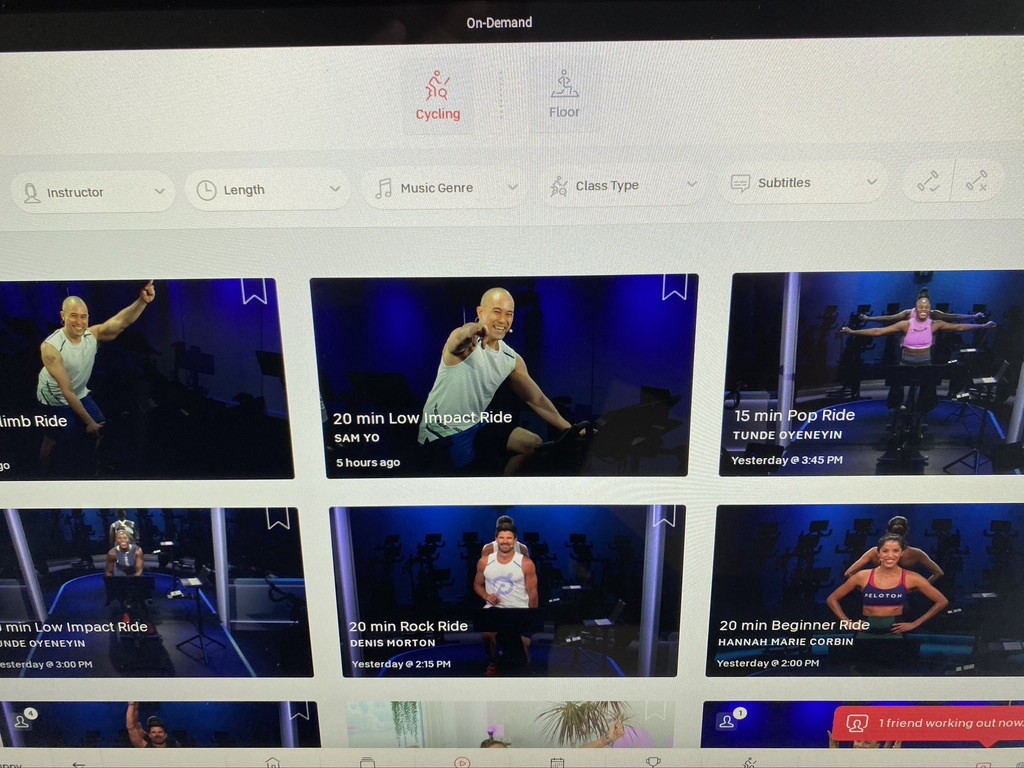
And the top classes also provide entertainment: the best teachers (more on them in a moment) are able to make the experience entertaining, engaging, and enjoyable. In some cases, they are the class.
However, dig in a little deeper and the majority of online fitness classes still look pretty similar to the IRL versions. There are some adjustments to get the best results, but most of them match what you’d get in a good quality studio.
Similarly, when it comes to education the majority of online classes also conform to what (ostensibly) worked in-person and then graft this experience into an online setting.
However, this direct grafting rarely works out well.
Education can benefit from following fitness, not in the ‘grafting’ of IRL experience to URL, but instead by utilizing elements like interactivity, pacing, and mixed media.
The passive classroom environment just doesn’t work anymore – online or in-person.
Here are 3 simple examples as to how education can benefit from a fitness-style approach.
- The best all-round fitness classes often blend technique, sprints, and endurance. This shifting of gears between different modes kills boredom and also encourages participants to go just a little bit further
- Much of fitness is about the concept of practice. A spinning class doesn’t teach you to ride a bike, it just encourages you to get the bike ride done. And while a yoga class might teach you a new pose, once you know it, the class is about the practice. There’s opportunity for education to offer more spaces to practice, rather than solely learn
- A fitness class isn’t drawn out for hours at a time. There’s plenty of time to rest after a sprint or recover after a strength-building session. Likewise, it’s unreasonable to drag out a Zoom education class and risk fatigue.
Opportunity for Adventure: Utilize more changes in state, energy and format; bring more entertainment into class; and find additional space for practice.
2. Content as connective tissue
‘Content’ isn’t just a thing in of itself: it can help bridge gaps and pave the way for experiences that truly engage
Most content in the online education sector consists of talking heads videos and flat assets like PDF worksheets. These have worked reasonably well, but we’re about to see a big shift not only to a far richer range of media and formats, but also where content surfaces.
Content doesn’t just show up in class. It can occupy the space in-between; helping further craft the experience and encourage and guide participants.
Examples include a nudge about a stretch or warm-down exercise to try out; a quick AMA session with a coach; a ‘behind the scenes’ special; or an invitation to join a small group session around a particular topic.
You may think these content examples relate specifically to connected fitness, but they can manifest just as smoothly in an educational experience.
Jeffrey Lancaster, co-founder of future of work startup Fondo, has a cool way of thinking about this. He thinks of these in-between moments as being part of a broader concept: ‘facilitated serendipity’.
For anyone creating a product or experience with content that goes beyond classes, it’s worth considering where you can foster this facilitated serendipity. What’s the magical little extra someone wasn’t expecting, but seems to show up just when they need it?
It’s hard to deny the sector leading the way in creating facilitated serendipity (and interactive content more broadly) is gaming. Unsurprisingly, there’s now ‘gamification’ occurring in all kinds of experiences.
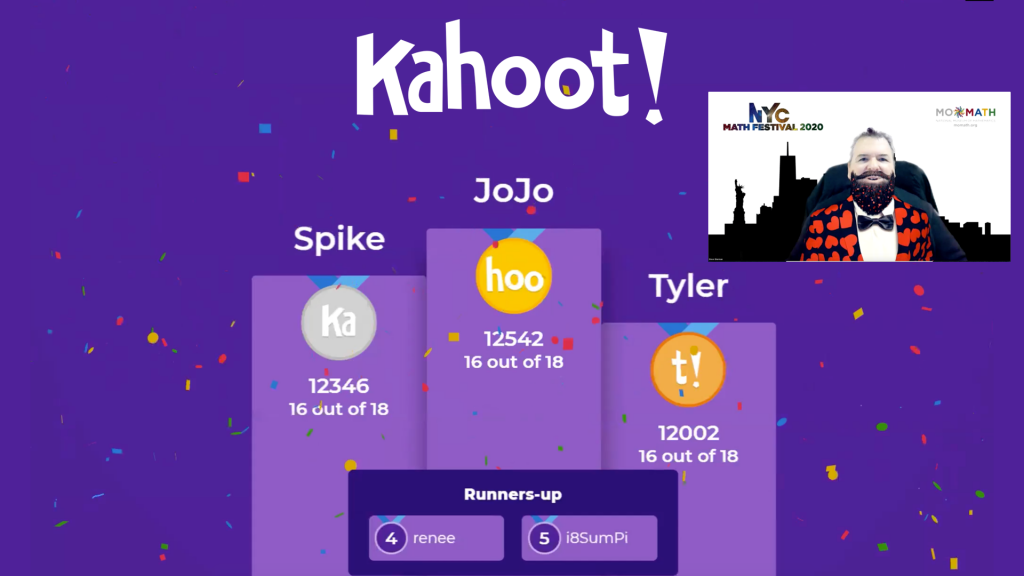
In education there are well established companies like Kahoot and Duolingo who bring a playful gamified quality to their products, while connected fitness startups tend to take a more serious approach to their streaks, leaderboards, and unlocks.
Media analyst Eric Peckham had this to say about cycling startup Zwift’s focus on what he calls ‘fitness-gaming’:
“Cyclists can put their bike on a trainer at home (which makes it stay in place) and ride with other players inside a virtual course where their characters’ looks, movements, and power corresponds to their own. Because users are represented as players within a social game, there is the benefit of network effects, opportunity for in-game commerce and an audience viewing the competition.
In Zwift’s case, it’s developing a full-force virtual cycling league that involves real like pro cyclists and that he aims to get included in the Olympics as a cycling event.”
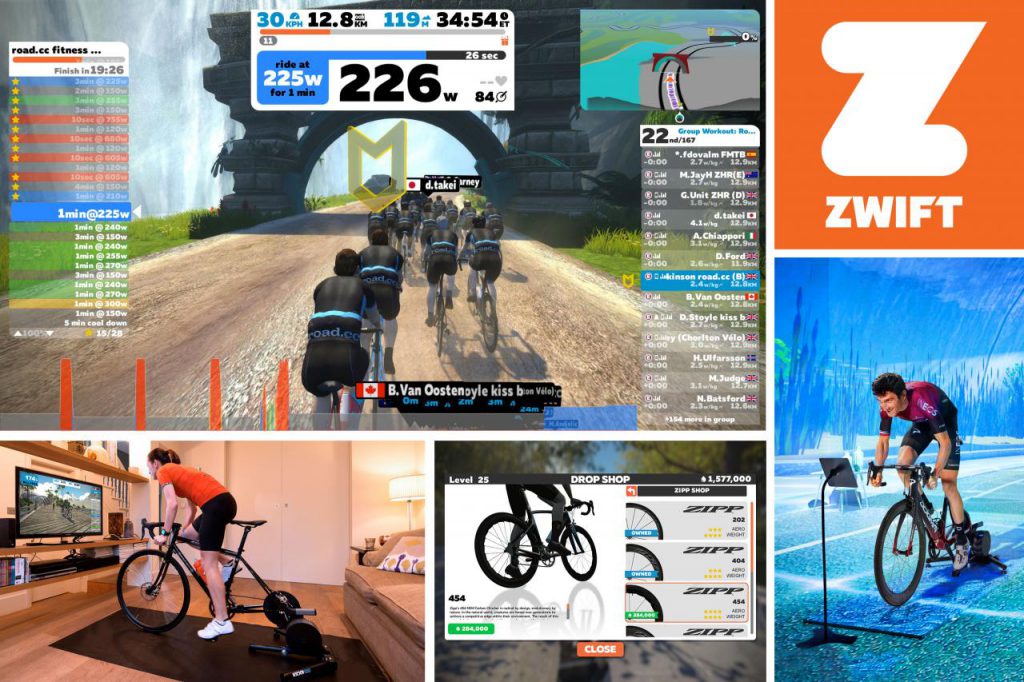
Going a few steps further, Peloton’s chief membership officer Brad Olson believes at-home fitness isn’t just about gamification, but the sector itself is comparable to how the gaming industry evolved:
“We once played video games in malls, but then people discovered they could play at home and experience the same connection. Now everyone is asking for an Xbox or PS5 for Christmas. The same is happening for fitness.”
This opens up a lot of questions: just one being whether many traditional education institutions could go the way of video game arcades in malls. While it’s tempting for me to throw a spoiler in here, we’ll be getting further into the location element of what Olson suggests later on.
First though, let’s take a look at talent.
Opportunity for Adventure – Content: Create facilitated serendipity; offer micro magic moments in-between more formal class experiences
3. Teaching talent as a driving force
The new generation of teaching talent can be nurtured in a whole host of new ways. Both fitness and education can look to Hollywood for inspiration
Ok, now we’re cooking.
I’ve spent most of my career in and around talent development: as a booking agent for bands and DJs; as a coach to creative entrepreneurs; and building a startup helping people explore new career identities and opportunities.
There’s a bigger discussion here about what talent actually is, but putting that big existential question to one side for a minute, let’s dig into how fitness and learning organizations nurture their talent.
Many of the new wave of fitness companies have looked to the playbook of other gig economy platforms, offering personal training sessions that can be booked directly through the app.
However, what’s more interesting is how Peloton (yup, them again) have approached talent acquisition and development.
Talent is one of the hidden strengths in Peloton’s business, underlined by the number of premier instructors they’ve attracted from fitness studios to teach exclusively within the Peloton ecosystem. Many of these instructors are poached from now-struggling cult brands Soulcycle and Barry’s Bootcamp. Ouch.
When it comes to the cash, word is Peloton pays instructors around $500 per class – over 3 times what’s offered by Soulcycle and 9x Equinox – and also awards them equity in the business. In turn, instructors are free to build their own personal brands. Some – like Robin Arzon and Olivia Amato – are clocking up audiences well into 6 figures.
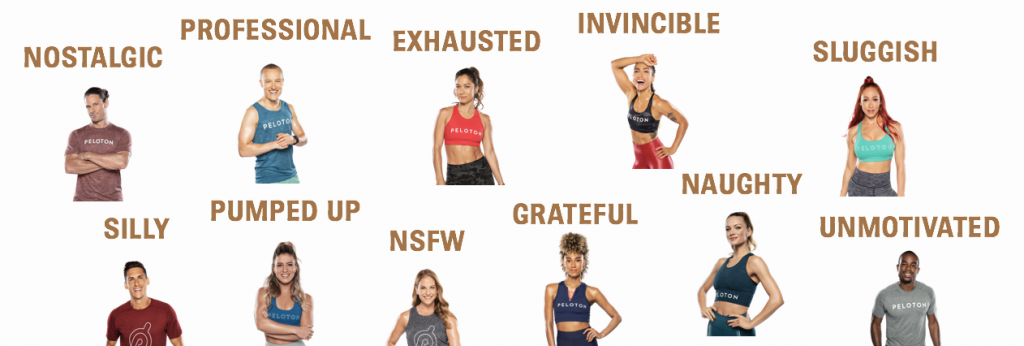
This approach brings to mind the likes of talent agency CAA and renowned VC firm a16z:
“Everybody here, we refer to as ‘Partner.’… we got a lot of criticism of that early. But it worked well because we’re in the services industry and “Look, if you’re representing the firm, you are [a] partner.”
This talent component is huge and connects into a bunch of other macro trends around the wider creator economy and future of work. While a deep exploration of those is well beyond the remit of this piece, there are three elements of the talent component worth looking at in more detail.
Element 1: Platform at the core
Around the time of March 2020’s big IRL pivot, I was reading the autobiography of CAA co-founder Michael Ovitz. The book got me thinking more deeply about what a version of his company may look like for educators.
As with fitness influencers, agencies picking up top education talent (i.e. professors) has been happening for a while: an agent represents them for speaking gigs, book deals, and other opportunities.
While there’s still plenty of mileage in this area, what’s new is an underlying platform becoming the core business rather than an intermediary services company sitting in between.
This is already happening with the likes of UpWork becoming the de facto platform for tens of thousands of freelancers – not to mention the various areas of the gig economy served by Uber, Lyft, DoorDash, and the rest. Users on these platforms are able to get hired as well as track their time, access boilerplate contracts, and so on.
However, there’s a huge opportunity for a different kind of talent platform, where talent are made to feel like genuine partners, and are given a hand in shaping the creative and strategic future of the platform itself. There’s also all kinds of vertical integration opportunities, which we’ll get into as the final of our 8 elements.
Peloton is already making moves in this direction, and it wouldn’t be surprising to see them hiring talent agency executives to help drive these initiatives forward.
Expect the same to happen in education – except with an even bigger space to play in.
Element 2: Instructors –> Coaches
And as mentioned above, top teachers will continue to build their own audiences, and they’ll need new types of platforms and partners to support that growth.
However, this gets to some fascinating questions around the next generation of teachers.
- Are the world’s best teachers already teachers?
- Are the people currently considered the world’s best teachers actually the world’s best teachers?
- Will the new wave of teachers even be traditional teachers at all?
This is a fascinating concept, but also carries some significant risk.
Masterclass’s business is largely built on this proposition. Their video-based courses feature celebrity-level experts teaching the fundamentals of their particular field.
However, many people conflate success in a field with being able to teach. The world’s best teachers may well be successful in their field, but they’re almost certainly not going to be celebrities who then create a Masterclass series. Why?
To paraphrase Seth Godin & Brain Koppelman’s exchange on this – if you’re a first-time filmmaker you probably don’t want Steven Spielberg as your coach or teacher. Being a practitioner and a teacher is not the same thing, and neither is being a celebrity and a teacher. After all, when was the last time Spielberg was working with a $10k budget and struggling to get agents to return his calls?

Going one step further, Seth also notes that one of the world’s best swimming coaches is not a Michael Phelps level Olympian, but a guy with a pot belly and one arm.
Tomorrow’s very best teachers won’t be existing celebrities. They probably won’t be traditional professors either. Instead, a group of people with a hybrid skill set will be increasingly in-demand: they’ll be part educator, part entertainer, part coach.
The coaching element here is particularly underestimated – and again we can look to fitness for inspiration. Almost every leading athlete works with a coach; and the connected fitness boom is enabling everyone to have access to their very own roster of coaches.
Expect the new era of education to follow suit – particularly because pure instruction will decrease in value. As the ability to solely transfer knowledge and information becomes further commoditized by technology, those with the ability to help make transformation (whether as entertainers, coaches, or both) will be in huge demand.
Element 3: Beyond human
Let’s go a step further. What if the top teachers were not actually people at all?
Here’s Mario Gabriele in his newsletter ‘The Generalist’:
“If talent becomes the most expensive part of the equation and the greatest impediment to scalability, will companies look to fabricate alternatives? We have seen Tupac resurrected, and Lil’ Miquela animate before our eyes. The Brud concoction even conducted “live” interviews at last year’s Coachella.
Why not revive Richard Feynman with his knack for plain-talking analogies and infectious energy? Bill Gates once described the Nobel Prize winner as the “best teacher I never had,” going so far as to create Project Tuva, a restoration of Feynman’s best lecture. It is not difficult to imagine a more vivid and personal renovation that allowed a reborn Feynman to interact with students, undergirded by an AI-system similar to that leveraged by Luka.”
This may feel a little scary, but again there’s huge potential:
- How about blended live sessions with Einstein and Neil de Grasse Tyson in tandem?
- A Jane Fonda fitness class with her sporting full 80s hairdo and purple leotard?
- The best human educators having avatar teaching assistants to serve more students?
The possibilities are endless, but one thing’s for sure – identifying and nurturing the very best audience-facing talent will remain key in both fitness and education.
Opportunity for Adventure: Alternative training options for the new wave of teachers; create blended program featuring virtual and human talent
Oh, and while we’re speaking of machine learning…
4. Technology opens up access
Amidst a huge range of software options, hardware is still a big blocker to access and opportunity. It’s probably where we need Big Tech the most.
In the connected fitness boom, technology is a clear part of the proposition – both hardware and software.
Peloton was derided (yes, pun intended. I make no apology) for making their bikes two grand a pop. The product didn’t exactly feel accessible. And as accessibility is one of the values I aim to live by, I didn’t exactly feel enamored.
But my biases got in the way. It was a classic disruptive move. Just as Uber started with limos and then expanded to capture a much larger market, Peloton, Mirror and the others have been able to do the same.
Technology has been a huge element in enabling this growth, and when we think of the tech underpinning these companies our minds often go to their software. After all, it’s where the user interface is, and how the content is delivered. It’s where those dopamine hits are triggered.
There’s a whole wealth of opportunity in software: whether it’s dynamic curriculums; or fitness-based dating apps. One area I’m particularly excited about is live jamming software for teachers: imagine harnessing the creativity that comes from using Adobe Illustrator or Ableton Live to create learning content?
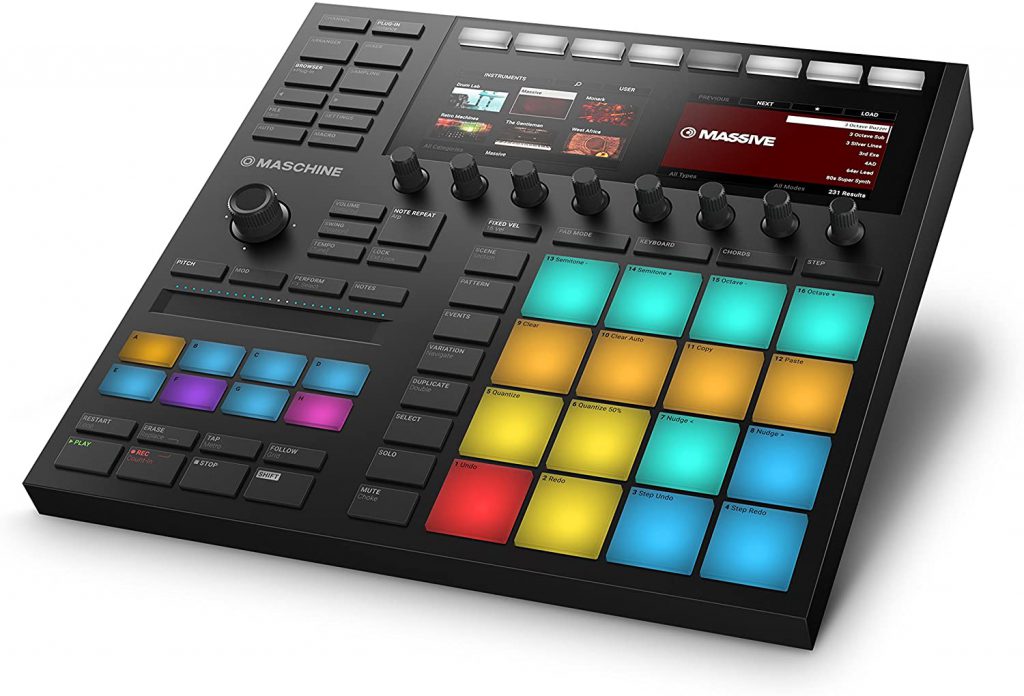
But arguably the most challenging – and most important – part of technology in both fitness and learning is the hardware.
Hardware is hard. And hardware is where a Big Tech company like Apple comes in. They’re really good at it. It’s why a lot of people are speculating that Apple will acquire Peloton in the very near future. Scaling the hardware part of the business likely needs that turbocharge that only a select few can offer.
Going back to the accessibility challenge, there’s been much written in the past year about issues around remote learning – with a constant theme being the lack of access for all. If you’re reading this, you probably have a good broadband connection and a decent enough mobile or desktop device. But for many, the Zoom revolution is leaving them behind, and those magical ideas of Einstein and Miquela surfing a digital tidal wave as they teach you about relativity will remain a mirage. It’s not just software accessibility that is a challenge: hardware is arguably the biggest bottleneck to access.
Because hardware is hard – and by extension, expensive – we’ll almost certainly see Big Tech to sweep into town. In fact, we probably need them to. It’s perhaps the only way that fitness and learning can be fully democratised.
Tying this back to the Content element (factor 2 of our 8), here’s Eric Peckham again on the power of weaving together content and hardware:
“[Content as a utility] is content that is framed as providing concrete outcomes in areas where we are used to spending a lot of money (health, education). The hardware purchase creates a sunk cost bias that makes customers resistant to stop subscribing.”
So, while most eyes go to the software, it’s arguably hardware (with software and content layered on top) where the really significant moves can be made.
Opportunity for Adventure: The catalyst for this entire piece was a visit I made to the NYC store of connected fitness startup Mirror. What if their wall-based home fitness studio was infused with avatar magic, and made far more broadly available through Big Tech’s undeniable distribution abilities? Imagine live learning with any talent, wherever you like, on an affordable and portable device. Google Glass v2, perhaps?!
5. Community fosters desire
Just like running and many other energetic pursuits, learning is better together. Especially when it gets hard and you’re forced to sweat.
Let’s be honest. For most of us, fitness sucks. I can just about drag my carcass for a 20 minute run around the park most mornings, but it’s not pleasant. Especially in a New York winter (or peak of summer, come to think of it)
While there’s an almost infinite amount of terrain available for a runner to explore, getting the running shoes on and leaving the house isn’t always enticing. The desire to run is somewhat lacking.
One thing that helps is having others headed in the same direction, with similar goals and challenges to overcome. Community is a huge driver in the likes of Nike Run Club becoming so popular.
The wave of fitness companies that grew so quickly 5 or 10 years ago was largely powered by this depth of connections. You could go to Barry’s Bootcamp and hang out afterwards, maybe even make a new friend and then catch up for coffee (or some sort of strange concoction full of obscure healthy ingredients). The shared experience was crucial.
Somewhat counter-intuitively, remote fitness solutions have made these binds so much stronger. They’re connected, but for the web 3.0. It could be through leaderboards; niche interest groups; common goals; or shared experiences like running a big-city marathon together.
The depth of connection heightens the desire. The heightened desire deepens connection.
These dual aspects of desire and connection are both prominent in learning. There’s plenty of knowledge (terrain) to cover, the desire to learn (run) is scarce.
The future of learning needs a connected community of learners, educators, coaches and creators. The current iterations of these communities online are showing up mainly as Slack and Discord communities, with a few other new platforms like Circle starting to emerge. Expect a lot of new innovations here over the next couple of years.
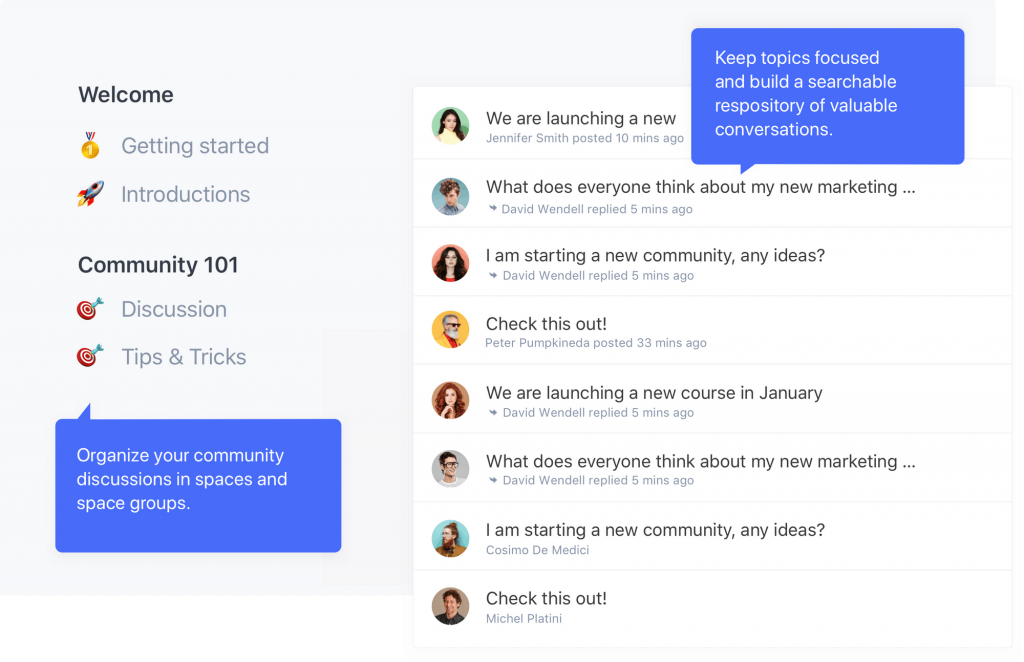
However, I want to emphasise the value of IRL: the in-person experience. Many of those trumpeting online education as the future seem to conveniently ignore this. While there is much technology can substitute and often improve upon, some elements of an in-person experience just cannot be replicated using digital tools.
All of us have a deeply ingrained desire for human connection, and we’re still a long way off technology being able to provide us with all the stimuli and signals that come from being in the same room as another human. Distance learning does alas create distance, not to mention that the majority of the most important skills for tomorrow’s world aren’t driven by technology, but by better understanding ourselves and others. While inevitably an irritation for VC-backed initiatives aiming for titanic global scale, I strongly believe real human connection needs to remain in some shape or form.
The likely outcome is many of tomorrow’s most powerful and tightly-bound communities will be blended – mixing online and offline. And like being on the dancefloor when an expert DJ is at the helm, the best blends will be so smooth we’ll barely notice (especially now we’ve been primed after a year of online connection).
This blending is still in its relatively early stages – more belt-drive turntables than professional DJ booths – but just as teachers are becoming the new DJs, the community building maestros are the new talent programmers and curators. The best of them will find ways to enable a diverse palette of ideas and people come to the fore; weave in-person and online interactions in smart and efficient ways; and keep audiences, members and patrons coming back for more – no matter the platform they’re using.
Opportunity for Adventure: IRL community spaces that can bridge the gap between the digital and physical worlds. They’ll be able to serve multiple audiences and learning institutions simultaneously (and no, it’s not a WeWork…)
6. Every brand is a learning brand
Smart brands have an enormous opportunity to engage with their customers through learning. Building a large-scale education brand from the ground up is a different proposition, though.
Inline with the at-home revolution, I recently decided to buy some dumbbells and an exercise mat. After inevitably being shunted to Amazon (I tried not to!), I found myself bewildered by a plethora of unfamiliar brand names.
The experience reminded me of this New York Times piece on ‘Amazon brands’: third party sellers launching thousands of new product lines onto Amazon with minimal conventional marketing, and often evaporating as quickly as they appeared. They’re everywhere – and fitness is one of their most prominent categories.
What many disgruntled Amazon sellers refer to as the ‘pseudo-brands’ are just that – they may have a logo, but they’re not really building a brand. Instead, the focus is on copying products and formats as rapidly and efficiently as possible.
It can feel like the pseudo-brands are taking over, but it’s remembering why companies and individuals build a brand in the first place. Without getting into a full brand strategy session (you can use Sweathead or a Section 4 sprint for that!), companies and individuals build brands to clearly differentiate and/or position themselves, to build defensibility, and to be able charge a premium for their products and services.
The ‘Amazon brands’ aren’t doing any of these things, but the very best new wave fitness brands certainly are.
They’re aspirational. Vibrant. Lithe. And they’re luxurious.
This question of brand is where fitness and education start to diverge.
In fitness, lululemon, Mirror and Peloton have been able to establish premium, aspirational brands (Peleton’s brand was able to withstand some pretty strong backlash); while the old guard have taken a pummelling.
Meanwhile, in education, it’s almost the flip. Aside from perhaps Masterclass [2] we haven’t seen any new education brands rise with anything like the same cache. And the legacy institutions are cementing their positions. Scott Galloway cites top universities – the likes of Harvard, Oxford, Yale, and Sorbonne – as the ultimate luxury brands. While they look to be bloated and out of touch, it’s a good bet they’ll actually become stronger than ever.
What fitness and education do have in common is the squeezed middle. Mid-tier gyms and middling universities will continue to come under enormous pressure.
While there’s plenty for education to learn from fitness around the branding of experience and talent, perhaps the real brand breakthrough won’t come from a startup brand, but from players in other verticals diversifying into the space.
This could manifest as in a few different ways, including:
- Large employers becoming professional educators for their own entry-level and junior employees, as well as potential new hires or even curious hobbyists. Google’s new range of micro-degrees begins to hint at how this could look (more on this later)
- Brands building their own audience-facing learning programs: imagine Nike sneaker design school, or Mac Cosmetics’ ‘behind the scenes’ bootcamps at global fashion shows
- Experiential Activations taking on new forms through high-fidelity ‘day in the life’ or ‘situation room’ simulations (airlines like Delta could bring customers deeper into their world through an airport or museum installation, or spark interest in different professions within their business)
- Transforming physical stores into a community-focused learning labs, with opportunities to explore products and processes in more detail (Carhartt are one company leading the way here)
Looking at this through the lens of what’s happening more broadly around fandoms (Zoe Scaman’s deck on this is well worth checking out), you can see there’s a huge opportunity for smart brands to create new ways for their talent, customers, and fans to engage with them.
Then of course there’s the other type of branded education – one built on sponsorship and advertising:
This workshop on mindfulness is brought to you by Headspace.
The next edition of our program on forestry skills is proudly supported by Patagonia.
Today’s class on systems thinking features remixable IP courtesy of SAP.
Before this week’s session on American History, here’s a message from Penguin Random House

Whichever way this goes, impactful learning is an incredible way for brands to garner valuable attention and trust.
This idea of every brand being a learning brand is something we’re very bullish about at Wavetable (yes, come and talk to us about it – we’d love to hear from you!)
Opportunity for Adventure: High-grade learning challenges powered by premium brands who are ready to open up their IP in unprecedented ways. These challenges will be available to participate in pseudonymously, but with very real rewards.
7. Location mapped to needs
Whether getting fit at the weekend or learning something new at work, we’ll want it to happen ‘in the flow’ of the other things we’re doing in our lives. And every so often, we’ll splash out big on a truly memorable experience.
Winding back to March 2020, thousands of crowd-focused consumer businesses shuttered almost overnight. It didn’t matter if they were gym or nightclubs, museums or universities – the impending pandemic meant these physical operations had to hibernate.
Over a year later, consumer-facing companies are preparing for what happens next. In the fitness world, there’s a fear that coronavirus may permanently shift workout habits. It’s not just the growth in Peloton and all the rest – we’re seeing a number of micro gyms pop up as a response not just to COVID-19 but to cripplingly high real estate costs in urban centers. And it doesn’t feel like these are fads – the changes are going to last.
Likewise in education there’s a growing sense that habits have changed for good.
Once again, it mirrors fitness – this time in the way we’ve been adapting at home.
First we were learning how to work from home: a surge in Zoom accounts and guides to collaboration and running online workshops.
Next, we were learning how to work out from home: UK personal trainer Joe Wicks led the way with his hugely popular daily ‘PE with Joe’ workouts for families.
Now – certainly for adults, if not many children too – we’re working out how to learn from home.
How will learning from home happen? Going back to factor one which focused on classes, it definitely shouldn’t feel like an IRL class grafted online. It may look more like the Mirror-inspired solution I mentioned in factor four, or short-form global adventures like those being offered by startups like Zip School and EncounterEDU.
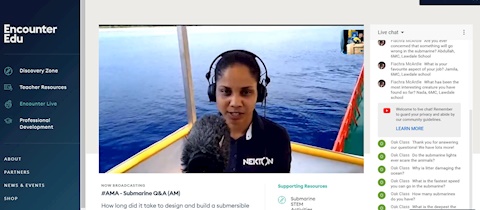
But do these shifts mean we’ll all solely learn from home? As with work and fitness some people will gravitate this way, but the majority of us will lean towards something blended. As per Brad Olson comparing the evolution of fitness to how video arcades disappeared from malls, many traditional education institutions will go the way of the malls themselves; defunct.
When it comes to location-based learning, I see two trends increasing in popularity:
- Premium experiences: This trends taps into other factors like brand, talent and community. People seeking a premium learning experience will be eager to travel to flagship locations for one-of-a-kind offerings. They’ll get to tap into all the serendipity of physical interaction, as well as additional ways to develop their knowledge, skills, and perspectives. They may travel an hour away from home for these experiences, or take a trip to the other side of the world.
- Learning in the flow: This concept, which Josh Bersin has written about extensively, proposes more work-based learning needs to happen as part of employees’ day-to-day. Much of this will happen in-person – shadowing an expert engineer, or chatting with another team about their sales techniques; but an increasing amount will be delivered online – using software tools that have well-designed learning tips built into the product, or APIs that pull in data from multiple sources. And we’ll see ‘learning in the flow’ show up not just in the workplace; the best experiences – whether for work, hobbies or side hustles – will seamlessly weave into the rest of our lives. Once again, facilitated serendipity matters.
Opportunity for Adventure: Premium off-site experiences for companies’ employees (and learning in the flow of work while they’re there!). And – taking a leaf from the Minerva Project’s playbook, plus a dash of Monocle’s conference concept – mini adventures in a rotating roster of global cities.
8. Vertical integration
There’s more to integration than snazzy merchandise. Education has potential for subscription-driven flywheels, elevating information, and innovative real estate moves.
One of the most prominent vertical integration plays in fitness over the past few years is Lululemon’s acquisition of Mirror. This has enabled the Canadian company to blend physical clothes with virtual fitness classes, and become a fully integrated solution for workout and wellness needs.
You don’t have to be an wily M&A dealmaker to see some of the possibilities:
- Mirror instructors wearing Lululemon gear;
- Lululemon stores featuring Mirror demos and live sessions;
- Recurring revenue bundles of Lululemon clothes and Mirror subscriptions
This third opportunity is likely the juiciest – after all, gotta have that boxfresh workout gear on tap, right?
And it would be remiss not to mention Peloton, who – as Joe Vennare reports – sold over 600,000 units of branded apparel in Q4 of 2020. Peloton CEO John Foley says apparel sales are “growing faster than the rest of the business”. Given the company’s broader growth over the past year, their merch business isn’t to be sniffed at. However, the bigger vertical integration play here is the prospect of a Big Tech player like Apple acquiring Peloton as part of their strategy of owning as big a slice of our digital lives as possible.
While there’s an argument to be made for apparel being an integration element in education – check out the amount of university-branded hoodies in any college town – it’s hard to see merch being a real driver in what’s coming next.
Here are a few areas where we’ll probably see elements of vertical integration occur:
- Alt Business Schools: A lot of traditional business schools are well… broken. A bunch of alternatives have popped up over the last few years, and those that are most successful will do two things: build a flywheel, and vertically integrate. The poster child in this space right now is On Deck. Much has been written about their flywheel effect (which in itself helps the flywheel – how meta), and we’re already starting to see them vertical integrate. Expect alt business schools to swallow up all kinds of stuff in the modern work and learning ecosystem: LMS platforms; communication tools; community building teams; design agencies; and even investment funds.
- Work Pathways: Larger employers will look to gain better access to diverse talent trained in work-specific skills. To do this, they’ll integrate a range of skill academies and onboarding programs. Google’s Micro Degrees are a good example of a program getting traction here. Additionally, I’m excited about the idea of ‘pre boarding’. These are ‘Day in the Life’ simulations and other short form experiential learning opportunities for people who aren’t yet employees, but are curious to try out the company – and visa versa. Also, watch out for lots more opportunities emerging in the world of longer-form apprenticeships. These have been getting traction in Europe for some time, and the US is just starting to more fully embrace them.
- Transforming and elevating information: Information and learning are closely related, but they’re not the same. Organizations sitting on a wealth of information can look to vertically integrate upwards into providing education opportunities. Relating to the trend of branded education, the most successful ventures in this area will be designed as ‘Default to Open’ with assets and IP available to explore in interesting ways. An example of an organization in a great position here is the Wikimedia Foundation – the parent nonprofit behind Wikipedia.
- Talent on tap: Peloton began with tech, and have expanded into content and broader lifestyle through their talent. Relating to factors 3 and 6 (talent and brand, respectively), education-adjacent companies may look to further integrate an array of educator talent to help them sell their products and services. Examples include the likes of Dell and Adobe, as well as Roblox or even the BBC (who recently launched a Masterclass-esque offering called Maestro). However, for these integrations to work successfully, incentives need to be aligned. This is why I believe Masterclass [2] won’t be able to vertically integrate. Their reliance on celebrity talent – and the talent not being focused on Masterclass as their core business – is too great.
- Real estate and the flow of work: Another industry turned upside by the pandemic is commercial real estate. Ironically, the biggest name in this sector have gone from crashing just before the pandemic to emerging like a phoenix from the flames as the world begins to re-emerge. Yup, that’s right – WeWork has a huge opportunity to integrate education into their offerings. Touching on factor 6 and the concept of learning in the flow of work, WeWork are likely going to have many thousands of new businesses joining them – all seeking new connections and ideas. WeWork have previously vertically integrated in a range of areas – from education startups like Flatiron School to err, wave machines. While the timing of many of these were… well, unfortunate – this time they’re in a prime position to take advantage of the growing demand for high-quality, well-designed education offerings.
Opportunity for Adventure: Companies stepping in to augment, and in some cases replace, many elements of higher education and career advisors. The opportunity is first in integrating blended apprenticeships and fellowships; from mini ‘day in the life’ or ‘pre boarding’ experiences through to long-form apprenticeship programs. Some companies will look to also integrate other parts of the education stack: facilitators, coaches, content creators, and perhaps even some snazzy merch lines…
What’s next?
It’s clear there’s a big market in fitness for premium, community-driven offerings. The new wave of connected fitness brands have proven this emphatically.
Let’s go back to Peloton one more time and break down the key components of their offering:
- Create high-end experiential content using a roster of teachers
- Live stream from a variety of locations
- Use the internet to distribute the content
- Combine the upfront purchase of hardware with monthly subscriptions to access live-streamed or recorded videos
- Use data to personalise the experience and measure how everyone is performing, versus themselves and each other
- Nurture talent in a variety of ways
The similarities between these components and the education sector of the future are striking.
But there’s another way to cut this. As both sectors are human at their core, let’s go beyond this business-focused view and look at education and fitness through the lens of the ‘jobs to be done’ (JTBD) concept, as famously coined by the late Clay Christensen.
Here are some of the most important jobs:
- I feel capable
- It keeps me sharp
- I am able to attract a mate
- I have an affiliation I’m proud of
- I’m able to achieve more than I thought I could
- I feel equipped to progress in my career
- I feel part of a like-minded community
- I’m more likely have a long, successful and vibrant life
For which industry is this set of JTBD? Bar one job (build a career), they’re identical. It’s a good bet that whether it’s fitness or learning, companies that succeed will excel at fulfilling these jobs to be done.
Perhaps the most fascinating opportunity (and challenge) in education is to build a significant premium brand that’s also accessible and impactful. While there have been many successful companies in the new era of education, very few have been able to position themselves in a similar manner to those leading the way in fitness.
As we’ve seen through our journey into the 8 factors powering connecting fitness, there are many possible paths for the future of learning:
- Could the next wave of teachers have a bigger reach than Instagram’s most popular personal trainers?
- Is hardware the next frontier, or should we focus on delivering live experiences in more compelling ways?
- Will gamified challenges with cryptographic credentials and rewards be the way we’ll all learn new things?
- Or is it something else entirely? [3]
No one can be certain, but in the new era of learning perhaps one thing’s for sure: the opportunities are boundless.
If you want to discover how you could bring some of the factors outlined here into the learning (or fitness!) programs you want to see in the world, get in touch with us at Wavetable. We’d love to hear from you.
Footnotes
[1] There are surprisingly close connections between nightclubs and learning – this podcast uncovers them.
[2] For me, Masterclass is more an entertainment brand than education.
[3] Here’s one idea. Maybe learning doesn’t mirror just fitness. What about ‘wellness’ more broadly? Will Houghtelling dives into this here:
“The best weight loss company isn’t a video + quiz platform about dieting. It’s Noom. It’s Omada health. It’s a tech platform that helps people reflect on their current eating habits, shares basic tips & best practices, and then – through technology & social accountability…”
But that’s for another post… 😉
No spam, no sharing to third party. Only you and me.


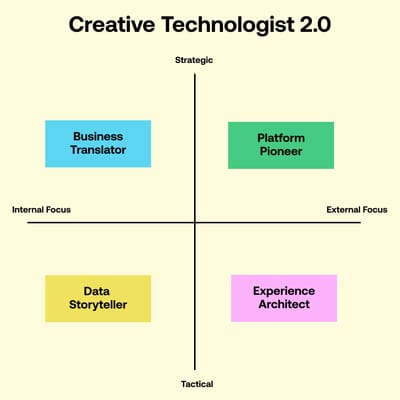

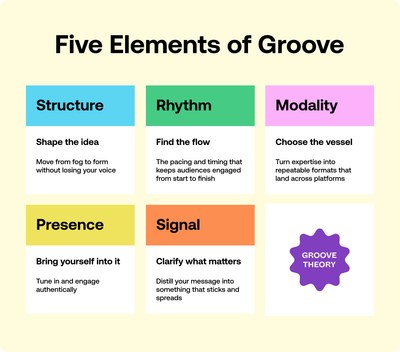


Member discussion